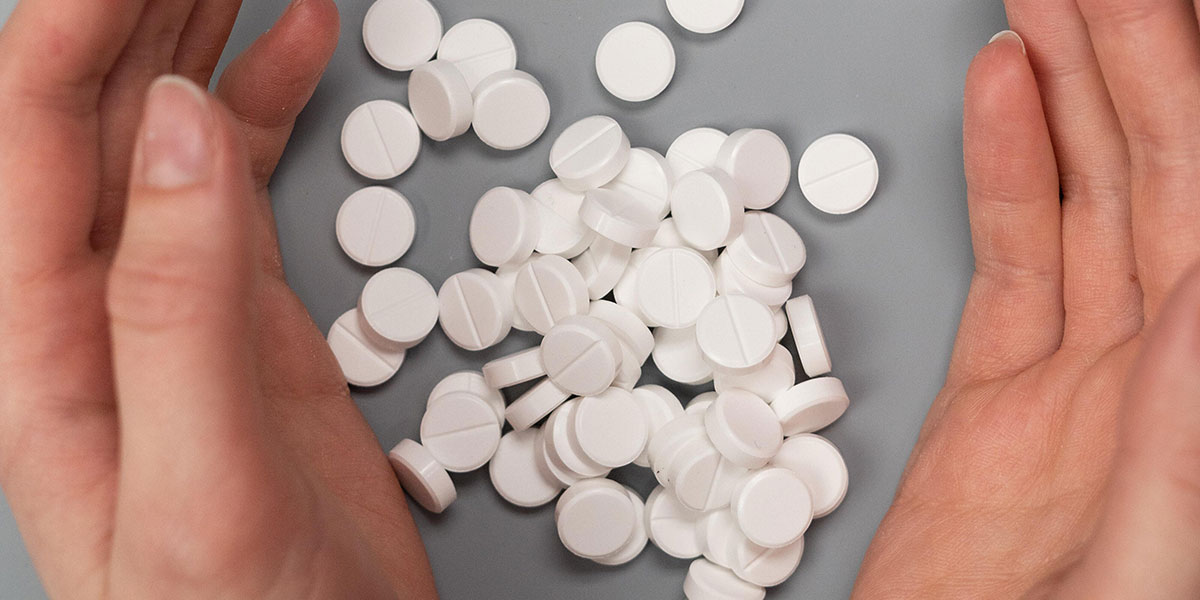Understanding Opiate Addiction
Opiate addiction, also known as opioid addiction, is a chronic brain disease characterized by the compulsive use of opiates despite harmful consequences. Opiates are substances that bind to specific receptors in the brain and body, primarily used to relieve pain. While they are effective in managing pain, they also produce a sense of euphoria, making them highly addictive.
What Are Opiates?
Opiates are drugs derived from opium, a substance extracted from the poppy plant. Common opiates include heroin, morphine, and prescription painkillers like oxycodone, hydrocodone, codeine, and fentanyl. These drugs are used medically to alleviate severe pain, but they can lead to addiction when misused.
How Opiates Affect the Brain and Body
When opiates enter the body, they bind to specific receptors in the brain called opioid receptors. These receptors are present in areas associated with pain regulation and pleasure. When opiates attach to these receptors, they block pain signals and induce feelings of relaxation and euphoria. However, with prolonged use, the brain adapts to the presence of opiates, leading to tolerance, where higher doses are needed to achieve the same effects.
Opiate use also triggers the release of dopamine, a neurotransmitter associated with pleasure and reward. Over time, the brain’s natural reward system is disrupted, and individuals become reliant on opiates to experience pleasure, making it difficult to stop using them.
Why Opiates Are Highly Addictive
Opiates are highly addictive due to their impact on the brain’s reward system. The intense pleasure and euphoria they produce create a powerful reinforcement for continued use. Additionally, the development of tolerance means that individuals need higher doses to achieve the same effects, which can lead to escalating use and addiction.
Signs and Symptoms of Opiate Addiction
Recognizing the signs and symptoms of opiate addiction are crucial for early intervention and support. It’s important to note that these signs can vary from person to person, but common indicators include both physical and behavioral changes:
Physical Signs
- Constricted Pupils: Opiates cause the pupils to shrink, even in dim light.
- Drowsiness: Individuals may appear unusually tired or sedated.
- Slurred Speech: Opiate use can impair speech and coordination.
- Changes in Sleep Patterns: Insomnia or excessive sleepiness can occur.
- Nausea and Vomiting: Opiate use can lead to gastrointestinal issues.
Behavioral Signs
- Social Withdrawal: Individuals may start avoiding friends, family, and social activities.
- Neglecting Responsibilities: Neglect of work, school, or family responsibilities.
- Financial Problems: Sudden financial issues or borrowing money without explanation.
- Mood Swings: Irritability, anxiety, or depression, especially when not using opiates.
- Secrecy: Being secretive about activities and whereabouts.
Causes and Risk Factors
Opiate addiction is a complex condition influenced by various factors:
- Genetic Predisposition
Genetics can play a significant role in addiction. Individuals with a family history of substance abuse disorders are at a higher risk of developing opiate addiction. Genetic variations can affect how the brain responds to opiates, making some people more susceptible to addiction than others.
- Environmental Factors
1. Early Exposure: People exposed to opiates at an early age, either through prescription medications or social circles, are more likely to develop addiction.
2. Peer Pressure: Pressure from friends or acquaintances to use opiates can lead to experimentation, especially in vulnerable individuals.
3. Trauma and Stress: Childhood trauma, emotional abuse, or chronic stress can increase the likelihood of substance abuse, including opiates, as individuals may use drugs as a coping mechanism.
- Mental Health Issues
1. Dual Diagnosis: Individuals with mental health disorders like depression, anxiety, or PTSD have a higher risk of developing opiate addiction. Opiates might be used as a way to self-medicate to alleviate emotional pain.
2. Imbalance in Neurotransmitters: Neurochemical imbalances in the brain, especially those related to dopamine and serotonin, can predispose individuals to addiction.
Understanding these factors is vital for prevention efforts. Early intervention, education, and support for at-risk individuals can mitigate the risk of opiate addiction.
The Impact of Opiate Addiction
Opiate addiction can have devastating effects on individuals, their families, and society as a whole:
Personal Impact
1. Health Issues: Opiate abuse can lead to respiratory problems, infections, overdose, and increased risk of diseases like HIV/AIDS and hepatitis due to needle use.
2. Impaired Cognitive Function: Opiates can impair memory, attention, and decision-making abilities, affecting daily functioning and productivity.
3. Financial Strain: Addiction often leads to financial instability due to spending on drugs, legal issues, and loss of employment.
Impact on Relationships
1. Family Strain: Opiate addiction can strain family relationships, leading to conflicts, breakdowns in communication, and emotional distress among family members.
2. Social Isolation: Individuals struggling with addiction may withdraw from social circles, losing friendships and social support.
Societal Impact
1. Opioid Epidemic: Many countries are facing an opioid epidemic, leading to a significant increase in overdose deaths and placing a burden on healthcare systems.
2. Economic Costs: Opiate addiction results in substantial economic costs, including healthcare expenses, lost productivity, and law enforcement efforts to combat drug-related crimes.
Seeking Help: The Importance of Treatment
Seeking professional help for opiate addiction is crucial for recovery and improving the overall quality of life:
Treatment Options
1. Detoxification: Medically supervised detox helps manage withdrawal symptoms safely, ensuring a smoother transition to recovery.
2. Therapy and Counseling: Behavioral therapies like Cognitive-Behavioral Therapy (CBT) and counseling address the psychological aspects of addiction, helping individuals develop coping strategies and prevent relapse.
3. Medication-Assisted Treatment (MAT): MAT, including medications like methadone, buprenorphine, and naltrexone, helps reduce cravings and withdrawal symptoms, increasing the likelihood of successful recovery.
Effectiveness of Treatment
1. Holistic Approach: Comprehensive treatment plans addressing physical, psychological, and social aspects of addiction yield the best results.
2. Long-term Support: Aftercare services, support groups, and ongoing therapy are essential for maintaining sobriety and preventing relapse.
Medication-Assisted Treatment (MAT)
Medication-Assisted Treatment (MAT) is a widely accepted approach in opiate addiction recovery. It involves the use of medications like methadone, buprenorphine, and naltrexone, combined with counseling and therapy. Here’s an overview of these medications:
How It Works: Methadone is a long-acting opioid agonist that binds to the same receptors in the brain as opiates, reducing cravings and withdrawal symptoms without causing euphoria.
Benefits: Methadone helps individuals manage cravings, allowing them to focus on rebuilding their lives without the constant need for opiates. Properly administered, it stabilizes brain chemistry and reduces the risk of relapse.
Potential Side Effects: Side effects can include drowsiness, constipation, and sweating. However, these effects often decrease as the body adjusts to the medication.
How It Works: Buprenorphine is a partial opioid agonist, meaning it binds to opioid receptors but with less intensity than full agonists like heroin. It helps reduce cravings and withdrawal symptoms.
Benefits: Buprenorphine is less likely to cause respiratory depression, making it safer in overdose situations. It also has a ceiling effect, meaning taking more of it does not produce stronger effects, reducing the risk of misuse.
Potential Side Effects: Side effects are similar to other opioids, but are usually milder due to the partial agonist nature of buprenorphine.
How It Works: Naltrexone is an opioid antagonist that blocks opioid receptors, preventing opiates from producing their effects. It is available in pill form or as a monthly injection.
Benefits: Naltrexone discourages opiate use by rendering them ineffective. It doesn’t lead to physical dependence, making it a suitable option for individuals highly motivated to stay abstinent.
Potential Side Effects: Side effects can include nausea, headache, and dizziness. It is crucial to be opiate-free for at least 7–10 days before starting naltrexone to avoid severe withdrawal symptoms.
Addressing Common Misconceptions: One common misconception is that MAT substitutes one addiction for another. However, when taken as prescribed and under medical supervision, MAT medications stabilize brain chemistry, allowing individuals to focus on therapy and counseling to address the root causes of addiction.
Behavioral Therapies and Counseling
Various behavioral therapies are effective in treating opiate addiction:
Cognitive-Behavioral Therapy (CBT)
How It Works: CBT helps individuals identify and change negative thought patterns and behaviors associated with addiction. It equips them with coping strategies to manage triggers and stress.
Learn more HERE! About the importance of aftercare in addiction recovery.
Contingency Management:
How It Works: This approach reinforces positive behaviors, such as staying drug-free, with tangible rewards. It encourages individuals to abstain from opiates by providing incentives for clean drug tests and attendance at therapy sessions.
Motivational Interviewing:
How It Works: Motivational interviewing focuses on resolving ambivalence about recovery. Therapists help individuals explore their reasons for change, enhancing their motivation to quit opiates and commit to treatment.
These therapies address the psychological aspects of addiction, empowering individuals to develop healthier habits and coping mechanisms, crucial for sustained recovery.
Aftercare
Aftercare services, including regular therapy sessions, ongoing counseling, and medical check-ups, are essential for maintaining sobriety. This ensures individuals have continued support, helping them navigate challenges and prevent relapse in the long term.
Conclusion
In conclusion, understanding opiate addiction is the first step towards recovery. It’s a multifaceted problem influenced by genetics, environment, and mental health. Seeking help is not a sign of weakness, but a brave step toward reclaiming life from the clutches of addiction.
Understand Opiate Addiction & Recovery! Contact Us.



